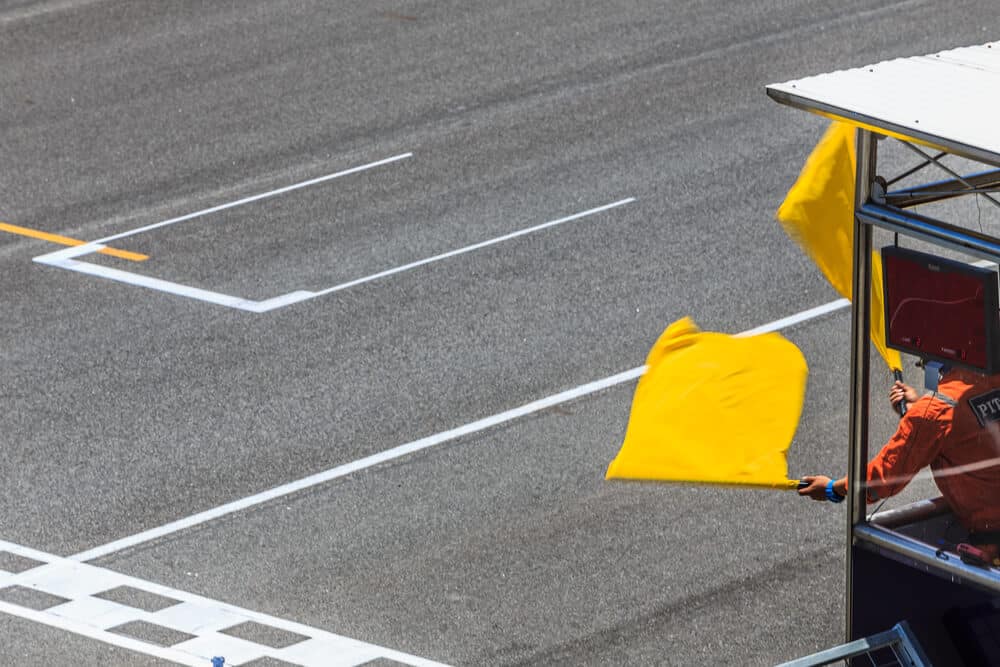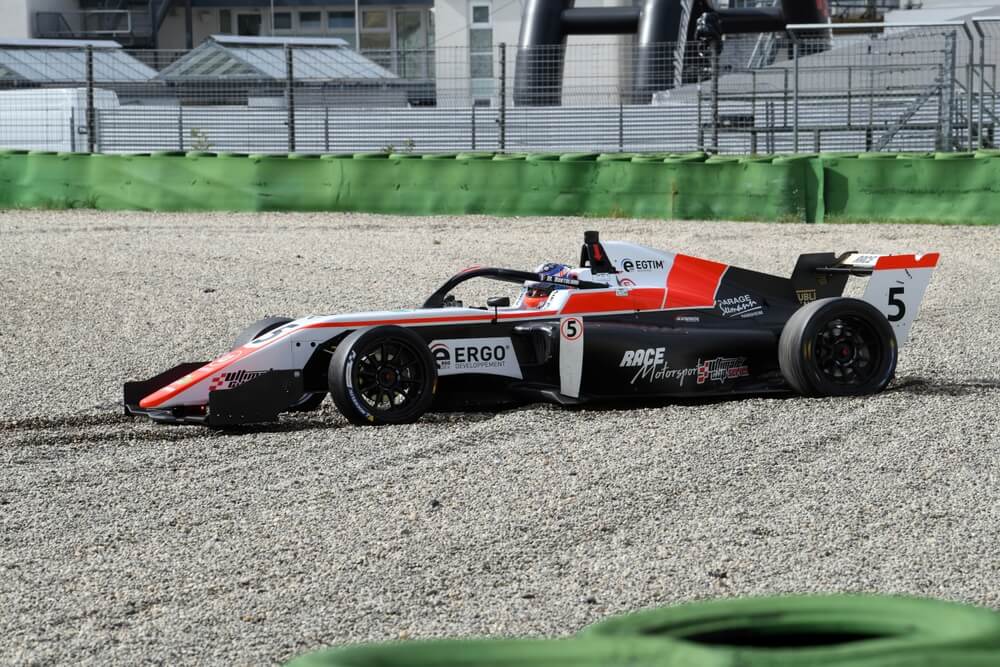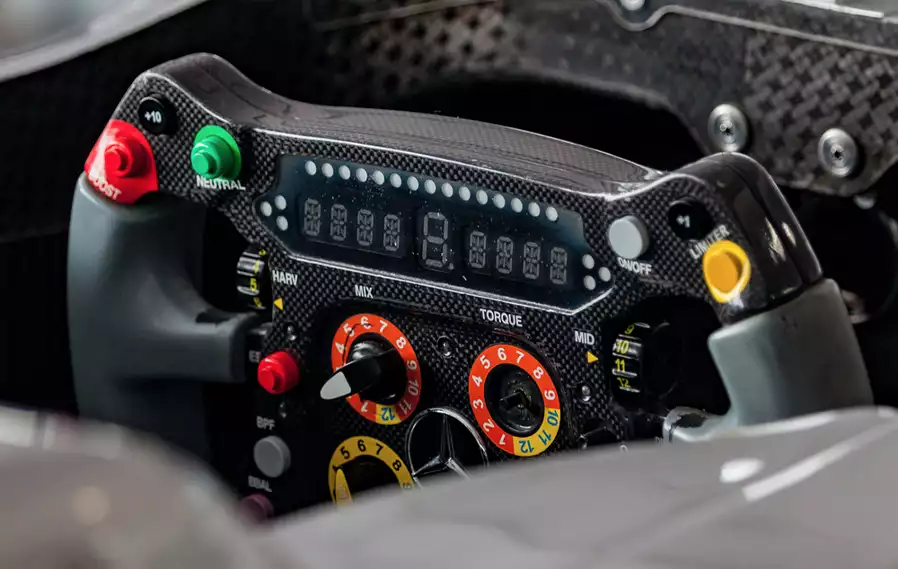Yellow flags are an essential part of Formula One racing. They are used to indicate a danger on the track and ensure the safety of drivers, teams and fans. They signal drivers to slow down and be prepared to change direction or stop if necessary.
In this article, we will take a closer look at the different types of yellow flags that may be displayed during a Formula One race. Including their meanings and the instructions drivers must follow when they are displayed.
We will also discuss the consequences of ignoring yellow flags and the importance of adhering to them for the safety of all parties .
Table of Contents
Watch this video to understand what a blue flag in Formula One means.
Types of Yellow Flags in Formula One
In Formula One racing, yellow flags are used to indicate a danger on the track. Drivers must slow down and be prepared to change direction or stop if necessary. There are three types of yellow flags that may be displayed during a race, each with a specific meaning and set of instructions for drivers to follow.
- Stationary yellow flags
Stationary yellow flags indicate a stationary danger on the track. Such as a car that has stopped on the side of the road or debris on the track. Drivers must slow down and be prepared to stop if necessary. When a stationary yellow flag is displayed, drivers are not allowed to pass other cars until the flag is withdrawn. - Waved yellow flags
Waved yellow flags indicate a danger on the track ahead. Such as a car that has spun out or is off the track. Drivers must slow down and be prepared to change direction. When a waved yellow flag is displayed, drivers must be prepared for a possible incident ahead and should not attempt to pass other cars.
- Double waved yellow flags
Double waved yellow flags indicate a particularly dangerous situation on the track, such as a crash or a car on fire. Drivers must slow down significantly and be prepared to stop if necessary. When a double waved yellow flag is displayed, drivers must exercise extreme caution. Passing other cars is strictly prohibited under a double waved yellow flag.
Consequences of Ignoring Yellow Flags
Ignoring yellow flags during a Formula One race is a serious violation of safety protocols and can compromise the safety of all parties involved. As a result, drivers who ignore yellow flags may face severe consequences, including the following:
- Penalty points on a driver’s license
When a driver ignores a yellow flag, they may receive penalty points on their racing license. These points can accumulate over time and can lead to suspension or revocation of a driver’s license.
- Time penalties during a race
Drivers who ignore yellow flags may also receive time penalties during the race. These penalties can result in a loss of time and positions on the track, affecting the driver’s overall race performance.
- Disqualification
In serious cases, a driver who ignores a yellow flag may be disqualified from the race. This means they will not be allowed to continue competing and will not be eligible for points or prize money. - Possible suspension from future races
Ignoring yellow flags can also lead to suspension from future races, which can have a significant impact on a driver’s career and reputation. It is important for drivers to understand the seriousness of this violation and the potential consequences of ignoring yellow flags.
In Formula One racing, yellow flags are used to indicate a danger on the track and drivers must slow down and be prepared to change direction or stop if necessary.
Other Colored Flags in Formula One Racing
In addition to yellow flags, there are several other colored flags that may be used during a Formula One race to indicate different situations and instructions for drivers to follow. These flags include:
- Blue flag: This flag is used to indicate that a faster car is approaching a slower car. The slower car must give way and allow the faster car to pass.
- Black flag: This flag is used to indicate that a driver must return to the pits immediately, usually because of a mechanical issue or a violation of rules. A driver who ignores a black flag may be disqualified from the race.
- White flag: This flag is used to indicate the last lap of the race. Drivers must be aware that the end of the race is near and should maintain their positions on the track.
- Checkered flag: This flag is used to indicate the end of the race. The driver who crosses the finish line first, wins the race.
Each of these flags plays a critical role in ensuring the safety and fair conduct of Formula One races. Drivers must be aware of the meaning and instructions associated with each flag and follow them accordingly.
Frequently asked questions about yellow flag in Formula One
What is the purpose of yellow flags in Formula One Racing?
How does a driver know when to slow down when a yellow flag is displayed?
What are the consequences for a driver who ignores a yellow flag?
Conclusion
Yellow flags play a critical role in ensuring the safety of drivers and teams during Formula One races. They signal drivers to slow down and be prepared to change direction or stop if necessary, indicating a potential danger on the track. By following the instructions associated with yellow flags, drivers can help to ensure the safety of themselves, their teams and other drivers on the track. It’s important to understand the importance of yellow flags, as well as the types of yellow flags and their meanings.
On the other hand, Ignoring yellow flags can result in severe penalties and can compromise the safety of all parties involved. It is a serious violation of safety protocols and can lead to penalty points on a driver’s license, time penalties during the race, disqualification or even suspension from future races. Drivers must adhere to the instructions associated with yellow flags in order to ensure the safety of all parties involved in the race.
Article sources
Yellow flags are an essential part of Formula One racing. They are used to indicate a danger on the track and ensure the safety of drivers, teams and fans. They signal drivers to slow down and be prepared to change direction or stop if necessary.
In this article, we will take a closer look at the different types of yellow flags that may be displayed during a Formula One race. Including their meanings and the instructions drivers must follow when they are displayed.
We will also discuss the consequences of ignoring yellow flags and the importance of adhering to them for the safety of all parties .
Table of Contents
https://www.youtube.com/watch?v=nwKMx-khj90Watch this video to understand what a blue flag in Formula One means.
Types of Yellow Flags in Formula One
In Formula One racing, yellow flags are used to indicate a danger on the track. Drivers must slow down and be prepared to change direction or stop if necessary. There are three types of yellow flags that may be displayed during a race, each with a specific meaning and set of instructions for drivers to follow.
- Stationary yellow flags
Stationary yellow flags indicate a stationary danger on the track. Such as a car that has stopped on the side of the road or debris on the track. Drivers must slow down and be prepared to stop if necessary. When a stationary yellow flag is displayed, drivers are not allowed to pass other cars until the flag is withdrawn. - Waved yellow flags
Waved yellow flags indicate a danger on the track ahead. Such as a car that has spun out or is off the track. Drivers must slow down and be prepared to change direction. When a waved yellow flag is displayed, drivers must be prepared for a possible incident ahead and should not attempt to pass other cars.
- Double waved yellow flags
Double waved yellow flags indicate a particularly dangerous situation on the track, such as a crash or a car on fire. Drivers must slow down significantly and be prepared to stop if necessary. When a double waved yellow flag is displayed, drivers must exercise extreme caution. Passing other cars is strictly prohibited under a double waved yellow flag.
Consequences of Ignoring Yellow Flags
Ignoring yellow flags during a Formula One race is a serious violation of safety protocols and can compromise the safety of all parties involved. As a result, drivers who ignore yellow flags may face severe consequences, including the following:
- Penalty points on a driver’s license
When a driver ignores a yellow flag, they may receive penalty points on their racing license. These points can accumulate over time and can lead to suspension or revocation of a driver’s license.
- Time penalties during a race
Drivers who ignore yellow flags may also receive time penalties during the race. These penalties can result in a loss of time and positions on the track, affecting the driver’s overall race performance.
- Disqualification
In serious cases, a driver who ignores a yellow flag may be disqualified from the race. This means they will not be allowed to continue competing and will not be eligible for points or prize money. - Possible suspension from future races
Ignoring yellow flags can also lead to suspension from future races, which can have a significant impact on a driver’s career and reputation. It is important for drivers to understand the seriousness of this violation and the potential consequences of ignoring yellow flags.
In Formula One racing, yellow flags are used to indicate a danger on the track and drivers must slow down and be prepared to change direction or stop if necessary.
Other Colored Flags in Formula One Racing
In addition to yellow flags, there are several other colored flags that may be used during a Formula One race to indicate different situations and instructions for drivers to follow. These flags include:
- Blue flag: This flag is used to indicate that a faster car is approaching a slower car. The slower car must give way and allow the faster car to pass.
- Black flag: This flag is used to indicate that a driver must return to the pits immediately, usually because of a mechanical issue or a violation of rules. A driver who ignores a black flag may be disqualified from the race.
- White flag: This flag is used to indicate the last lap of the race. Drivers must be aware that the end of the race is near and should maintain their positions on the track.
- Checkered flag: This flag is used to indicate the end of the race. The driver who crosses the finish line first, wins the race.
Each of these flags plays a critical role in ensuring the safety and fair conduct of Formula One races. Drivers must be aware of the meaning and instructions associated with each flag and follow them accordingly.
Frequently asked questions about yellow flag in Formula One
What is the purpose of yellow flags in Formula One Racing?
Yellow flags are used to indicate a danger on the track, such as a car that has spun out, stopped on the side of the road, or there is debris on the track. The purpose of yellow flags is to signal drivers to slow down and be prepared to change direction or stop if necessary, ensuring the safety of drivers, teams and fans.How does a driver know when to slow down when a yellow flag is displayed?
When a yellow flag is displayed, drivers must slow down and be prepared to change direction or stop if necessary. They must also be prepared for a possible incident ahead and should not attempt to pass other cars. Drivers will know when to slow down because the flag will be waving or stationary and be displayed at the side of the track or by the marshals.What are the consequences for a driver who ignores a yellow flag?
If a driver ignores a yellow flag, they may face penalties such as penalty points on their license, time penalties during the race, disqualification or even suspension from future races. Ignoring yellow flags can compromise the safety of all parties involved in the race, and as such, it is taken very seriously.Conclusion
Yellow flags play a critical role in ensuring the safety of drivers and teams during Formula One races. They signal drivers to slow down and be prepared to change direction or stop if necessary, indicating a potential danger on the track. By following the instructions associated with yellow flags, drivers can help to ensure the safety of themselves, their teams and other drivers on the track. It’s important to understand the importance of yellow flags, as well as the types of yellow flags and their meanings.
On the other hand, Ignoring yellow flags can result in severe penalties and can compromise the safety of all parties involved. It is a serious violation of safety protocols and can lead to penalty points on a driver’s license, time penalties during the race, disqualification or even suspension from future races. Drivers must adhere to the instructions associated with yellow flags in order to ensure the safety of all parties involved in the race.




